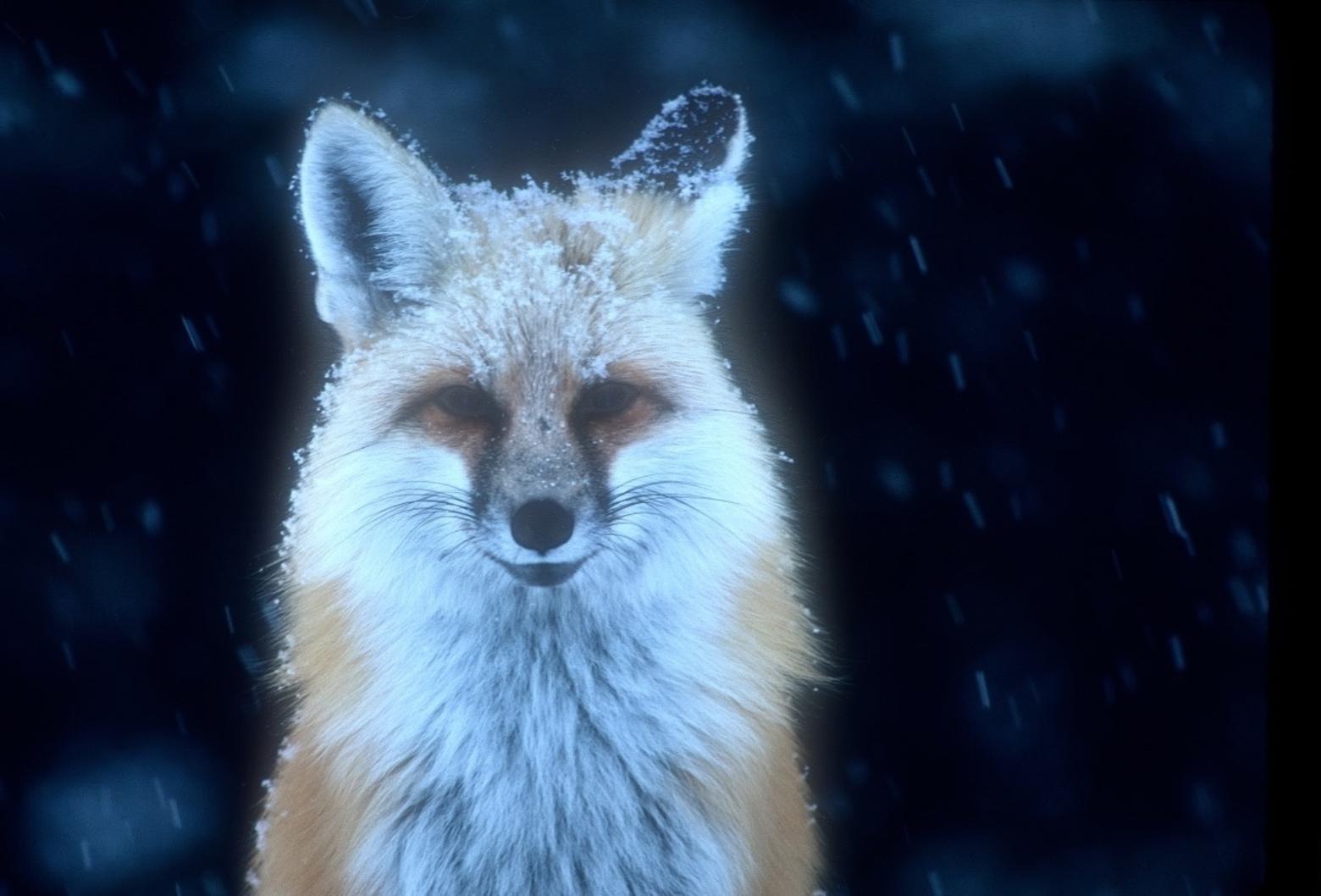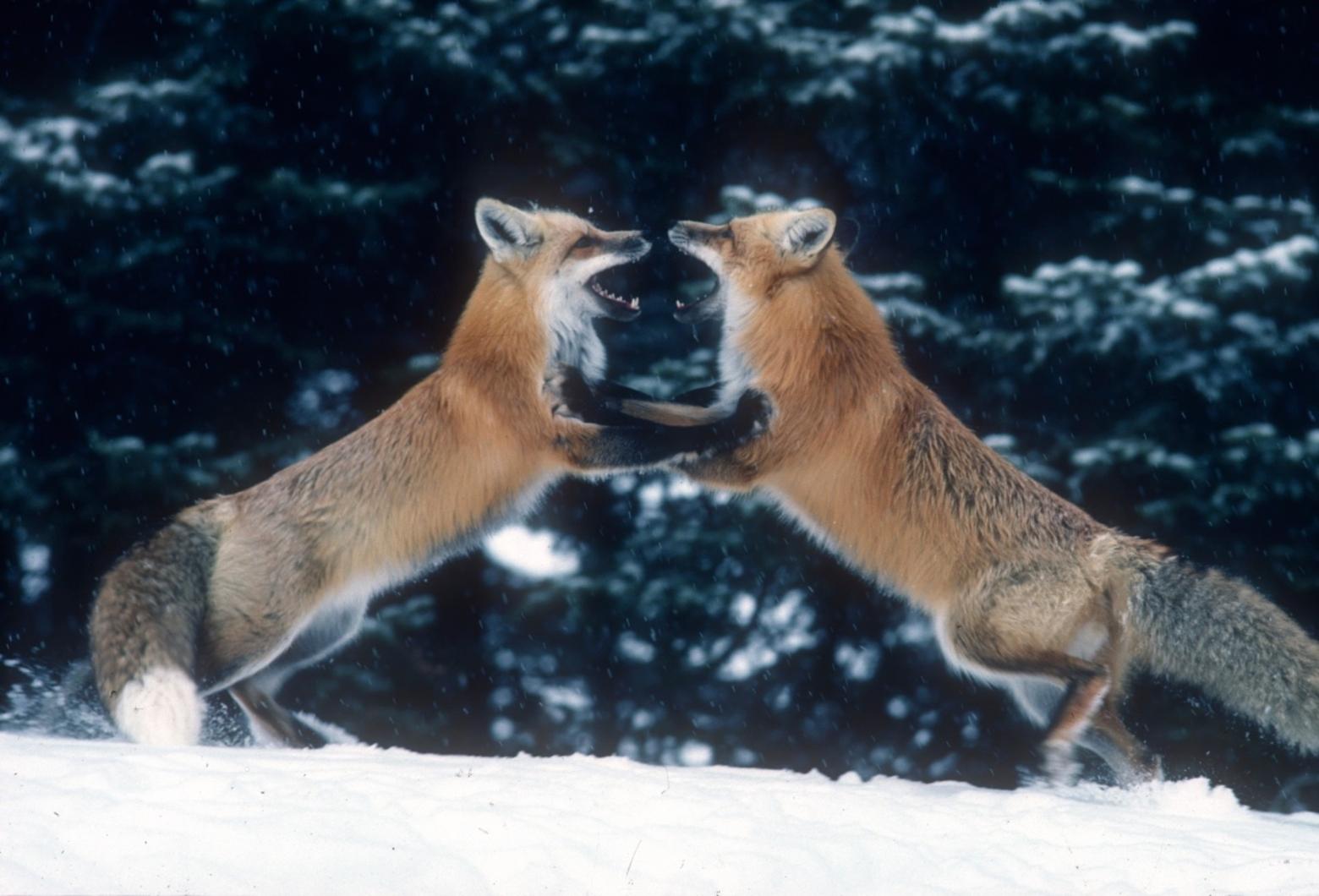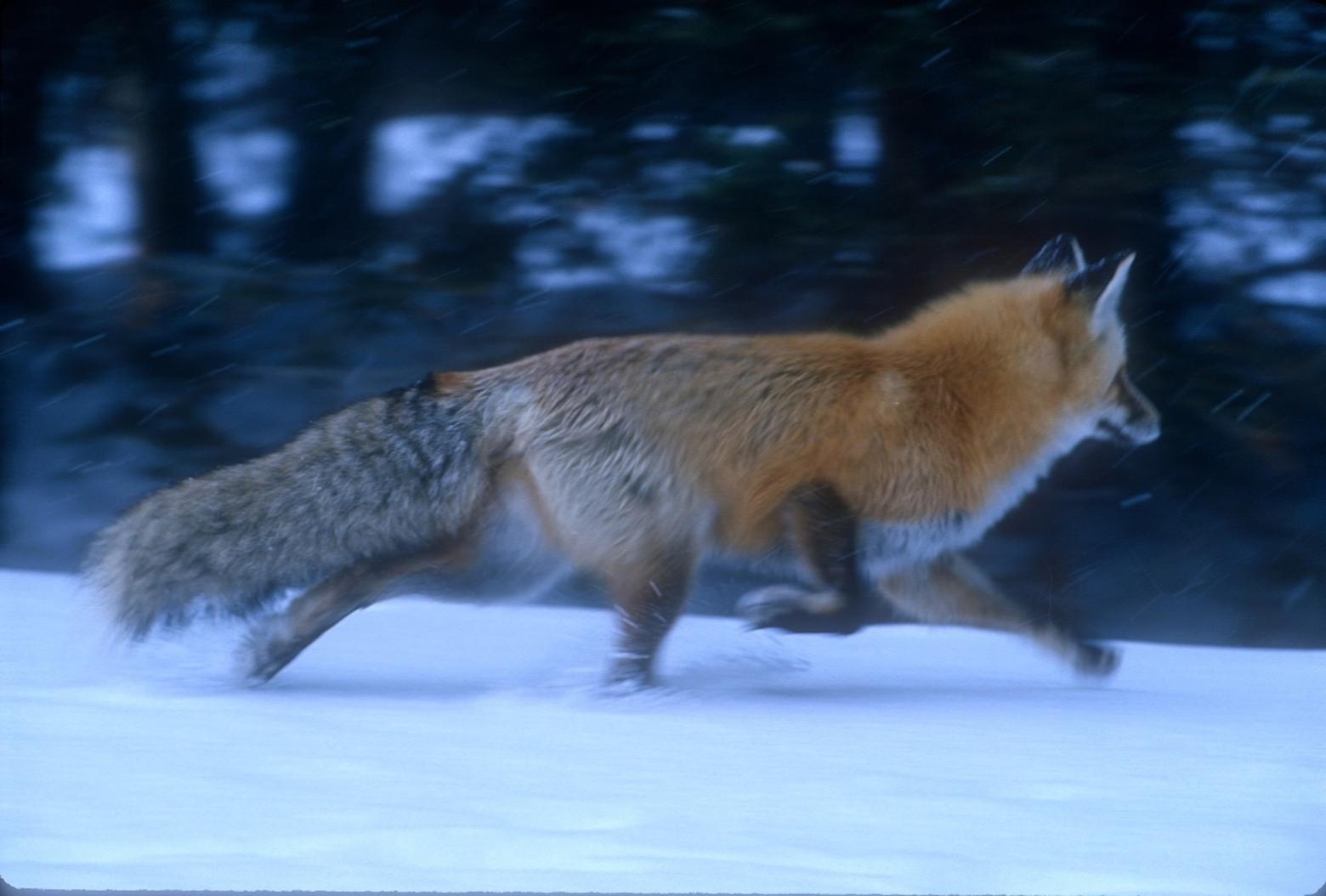Back to StoriesAn Interlude With Yellowstone's Haunting Mountain Foxes
Click here to read all of Steven Fuller's journal entries for "A Life In Wonderland" and this Mountain Journal profile of Fuller, "Twilight of the Winterkeepers"
January 18, 2018
An Interlude With Yellowstone's Haunting Mountain FoxesIn a realm known for its big animals, winterkeeper Steve Fuller delights in charismatic mesofauna
January 18, 2018—Red, White And On The Prowl
Foxes were an occasional sight on the central Yellowstone Plateau upon my arrival here, though sightings have become more frequent in recent decades, perhaps as a consequence of the re-introduction of wolves. Which knocked back the population of coyotes which had been killing/eating the foxes.
I am endlessly fascinated by the dynamism of nature here; never is there stasis or equilibrium; what happens with one species affects another.
Now, any winter sighting of a fox with its plush winter tail recalls a high end downy winter sleeping bag, which I suppose when wrapped around a fox’s body while snuggled in a tree-well surrounded by insulating powder snow is quite cozy, particularly if you have a full gut after a successful day snagging voles who supposed themselves safe under many feet of overhead snow.
Regarding this photo, “Dancing Foxes”: I have seen this posture only twice, each time in February, during the canid mating season. I presume the waltz involves that of a mated pair in a brief emotionally-charged domestic couples conversation.
One year, late in winter at mid-day, a fox routinely sat on the roof ridge of my house, presumably taking in the panoramic view. The highway to Canyon had opened to the public for the spring season just that morning and the first local auto accident of the year occurred when a van—the gawking driver distracted by the sight of a fox atop my roof—ran off the road into a snowbank.
No one was hurt, it was the first of many similar mostly minor accidents that occur for similar reasons every summer in Yellowstone—of people extracted the extraordinary.
I too feel the magic that foxes exude as well as the charisma of the
many other iconic North American predator and prey species among whom I live.
All of us, great and small, wild and domesticated, are increasingly in the grip
of the accelerating whirlwind of climate change. All our lives will be
profoundly changed in ways none of us can anticipate.
For the four and a quarter million visitors from all round the world the
sight of a fox, buffalo, or grizzly bear may be the only real experience of
these creatures in their lives.
Who can fault them their distraction? None of us,
and I include myself, is at our best when in the tourist mind set. I just hope
they don’t distractedly crash into me when I am on some mundane domestic mission.
The red fox (Vulpes vulpes) is native to North America and Europe, though I would hazard to guess too many may not realize, as biologists point out, that the majority of foxes seen in the eastern U.S. and plains states are descended from foxes introduced to our continent in the 18th and 19th century. The purpose was supply animals for horseback fox hunts and fur farms.
Recent research in Yellowstone
suggest that the foxes resident around Canyon are “mountain foxes” (V. v. macroura), a subspecies that
dwell at higher elevations in a few places in the Northern Rockies. Genetic
analysis will tell.
It’s tough for a predator to sustain herself in winter. The cold and the
heat sucking wind coupled with the exertion spent to make way through deep snow
requires a reliable minimum caloric intake. Poor hunting leads to early death.
This sequence of photos shows a fox playing hide and go eat with a vole.
The fox’s acute sense of hearing is focused on the faint sounds of a vole busy
under several feet of snow in the subnivean zone, that airy interface between
the bottom of the snow pack and the relatively warm earth below.
At rest the voles are warm within hollow nest balls of dried grass that are further insulated by the surrounding snow field. They dwell in what's called the subnivean layer.
The fox listens to the rustle of the vole amid the crispy
dried grasses of summer, or maybe to the sounds of delicate crystals of hoar
breaking as the vole moves about down below.
Or, perhaps the fox picks-up on conversations among members of the vole
community, or maybe on just the sounds of the vole talking to himself. Every sound enables the patient predator to
triangulate the exact location of its’ prey until… Boom!, something big with
lots of teeth bursts through your ceiling. End of story.
In myriad ways, we are all predators and prey. For now I
eat you, in time you will eat me, and so the wheel goes round.
Click here to read all of Steven Fuller's journal entries for "A Life In Wonderland" and this Mountain Journal profile of Fuller, "Twilight of the Winterkeepers"
MoJo is committed to giving you great reads that take a lot of time to produce. In turn, we rely on your generosity. We are a non-profit public-interest journalism site and, like public radio and television, we depend on you to keep us going and expand our coverage. Please click here to vote your values by supporting Mountain Journal.







